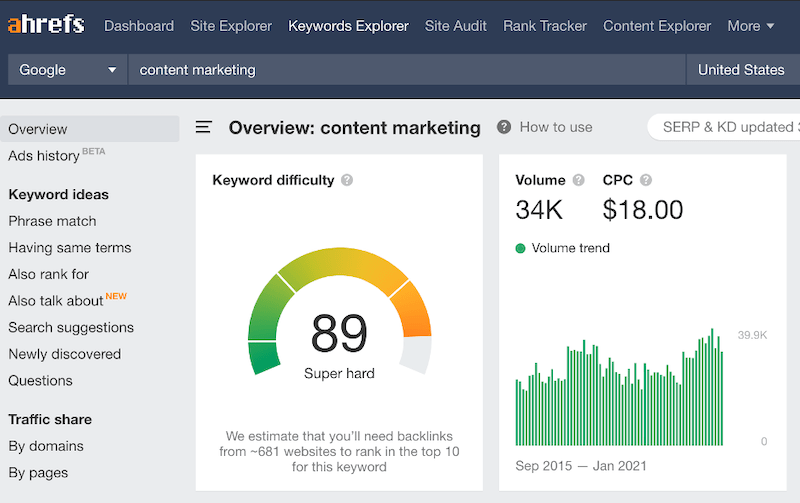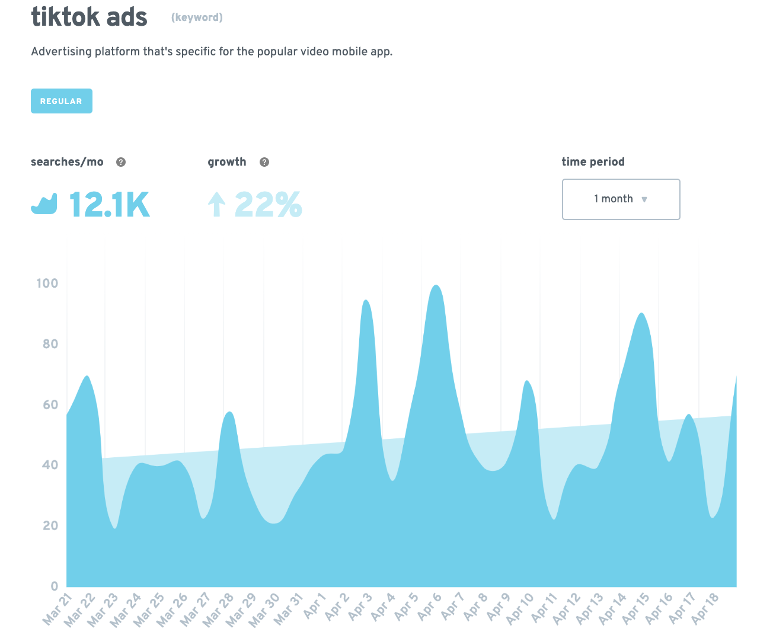8 Tips to Create Unique Blog Ideas in a Flash!
We’ve all been there. There are slots on your blog calendar that you need to fill but your keyword research is stale and your titles on your to-do lists feel dull. It will bore your readers if it bores you. Not only do you need inspiration, but also, and most importantly, unique blog ideas that are quick to implement.

This post will show you how to stop waiting for inspiration and get started on deciding which post to write next. Here are eight ideas for unique blog posts:
- Have a brainstorm
- Social media: Check out these sites
- Comment
- Begin with your personas
- Talk to other teams
- Use new keywords to get started
- Concentrate on your competition
- Use an idea generator
Let’s get started.
Here are 8 ways to create unique blog ideas.
Sometimes, keyword research doesn’t quite cut it. Perhaps you are interested in talking about something your readers might not know how to search for. Perhaps you are trying to reach a specific segment of your audience. Perhaps you are looking for an alternative angle to a traditional topic. These are some ways to create authentic content.
1. 1.
I don’t know if you are aware, but I spend most of my day sitting at my computer. If I’m not working on a blog or meeting, I respond quickly to Slack or check Google Analytics. I also send emails and do keyword research.
It’s hard to find the time to be creative. A brainstorming session can be a great way to start thinking about blog ideas. The best brainstorming happens during generative, collaborative sessions where any ideas are on the table. Unexpected angles and topics are bound to be discussed.
So whether you can set aside time with your team to focus on blog ideas or add some time to your next regular marketing meetings, be sure to brainstorm for ideas.
2. 2.
Check out the latest posts on social media to find out what your audience has been talking about. This includes the big platforms, like Facebook, LinkedIn, and Twitter, as well as other social media networks, like Pinterest, Quora, or TikTok. To see what your followers are saying about you, you can look at your tags and mentions. You can also spend some time on the homepage. You can go further to find even better and more unique blog ideas.
Take a look at the posts of industry leaders and search for industry hashtags. You can spend time scrolling through comments, posts, or replise.
#ppcchat is a hashtag for digital advertising. The #ppcchat hashtag thread contains many strategies, questions, hot takes, and more.

A good starting point for a blog post is to find a take such as this. What makes you disagree or agree? What are the opinions of other experts? Why is this important to PPC marketers?
3. 3.
It’s great to find out what your audience is discussing on social media. But it’s even more important to see how they react to blog posts you have already published.
It’s a smart idea to look at your comments sections when looking for new ideas. It’s possible to see their posts and what information they share about their strategies. Sometimes, you may even receive requests for additional information that could lead to a new post.
Take a look at this comment on Gordon’s post about Instagram captions:

Gordon is right. This post contains some great captions, which are perfect to copy or be inspired by, regardless of celebrity status. Shawn has a different angle, which might prove more useful for small businesses and make for a great blog article.
Next time you are looking for blog post ideas that surprise you, look to the comments. You can even check them regularly and note any suggestions you get so that you always have ideas.
/inventory-control-tips-backorder-management/
/managing-backorders-preparations/
/best-sales-practices-for-ecommerce-store/
best-tools-to-track-conversion-rate/
/how-to-build-an-ecommerce-funnel-to-increase-conversion/
/best-automated-notification-examples-with-atom8/
4. Begin with your personas
Another way to figure out unique blog ideas is to stop focusing on keywords and topics and to start instead with your buyer personas. Personas can be used to help you remember your target audience while creating marketing materials and campaigns. This includes your content.

Content that is based on your personas may even be more effective for your brand.
58% of B2B marketers see “audience relevance” as one of the deciding factors in the success of content marketing.
To use your personas to generate content idea, it is best to ask questions. Here are some examples:
- Is your personality stressed? What is the solution?
- Which is something that your persona could spend less time on? What’s the best way to do this?
- What preparations does your persona have to make for the upcoming holidays?
These are only a guideline. You can go further into your product or offer. Start to think about who your blog posts will appeal to.
5. Talk to other teams
This tip is simple. Your marketing team won’t have the best ideas for blog posts. Instead, those who work directly with your audience will have the best ideas for posts. Talk to your sales and technical teams.
Your sales team knows your prospects. They spend their day learning about new leads and figuring out what content prospects are most interested in on your site.
Your success or support team talks to customers often. They hear your customers’ concerns and excites, and they also hear it from tons of other customers so they can identify patterns.
These patterns can be used to create unique blog ideas. So set up some meetings, put some questions together, and get ready to write some awesome posts.
6. 6.
I know this post focuses on how to come up with blog post ideas that don’t start with the same keyword research all content marketers are focusing on. Jumping on new keywords before they gain momentum, or worse, plummet, can be a great way of finding new ideas that still provide organic traffic.
Ahrefs and Semrush both offer views that show newly discovered keywords relevant to your search query. These suggestions will not have many organic searches but can be indicative of a trend.

Click on “Newly Discovered” in the left navigation.
If you want to focus on some new, trending keywords that have some traffic, you can take a look at Exploding Topics, run by SEO expert Brian Dean.

Exploding Topics can be subscribed to or signed up for the newsletter. It will help you discover new trending keywords while they are still exploding. This gives you plenty of time to start your blog post ideas.
/automated-email-ideas-for-your-business/
order-management-guide-for-online-businesses/
shopify-tags-for-better-productivity/
ecommerce-erp-integration-and-its-benefits/
/benefits-of-automated-ecommerce-fulfillment/
/8-customer-retention-strategies-for-business-growth/
7. Concentrate on your competition
You don’t have to start from scratch. Sometimes you can look at what has been done well and find new ideas. For inspiration, you can look at the posts of your competitors to find new ideas.
You can use Ahref’s Content Gap tool to identify your competitor’s top-ranking keywords, which will lead you to their top-ranking blog posts. The tool will also tell you which keywords your competitors rank for, and what they are ranking for. This means that you will be focusing on content that you don’t have.

No keyword research tool? It’s not a problem. This can be done manually as well, but with less precision. Look at the blogs of your competitors to see what they are posting about. Then think about how you can take that information and make it even better.
8. You can use a blog post idea generator
Sometimes you feel stuck and can’t get out of your rut. You don’t have to be lost. It’s enough to have a tool that gives you ideas.
That’s exactly why blog topic generators exist.
HubSpot’s Blog Idea Generator is a great place to start. You can input up to five nouns and it will give you five blog ideas. If you enter your email address, you’ll get more. Below is an example topic.

These are my nouns: Content, marketing, and, of all things, laundromats.
These structures are almost identical, so it’s not a foolproof way to generate topics. Even if you don’t use the exact same ideas, the structure can help you change things up. For instance, I almost never think to use “The Next Big Thing for X” structure for blog post titles, but this is a good way to present thought leadership.
This is not the only reason I have included it. You can use these generators to find angles or approaches to bigger topics–like Instagram SEO or LinkedIn networking–that come up in any of the steps above.
/inventory-management-techniques/
/ecommerce-strategy-mothers-day/
/reduce-inventory-holding-cost/
/upsell-cross-sell-meaning-and-benefits/
